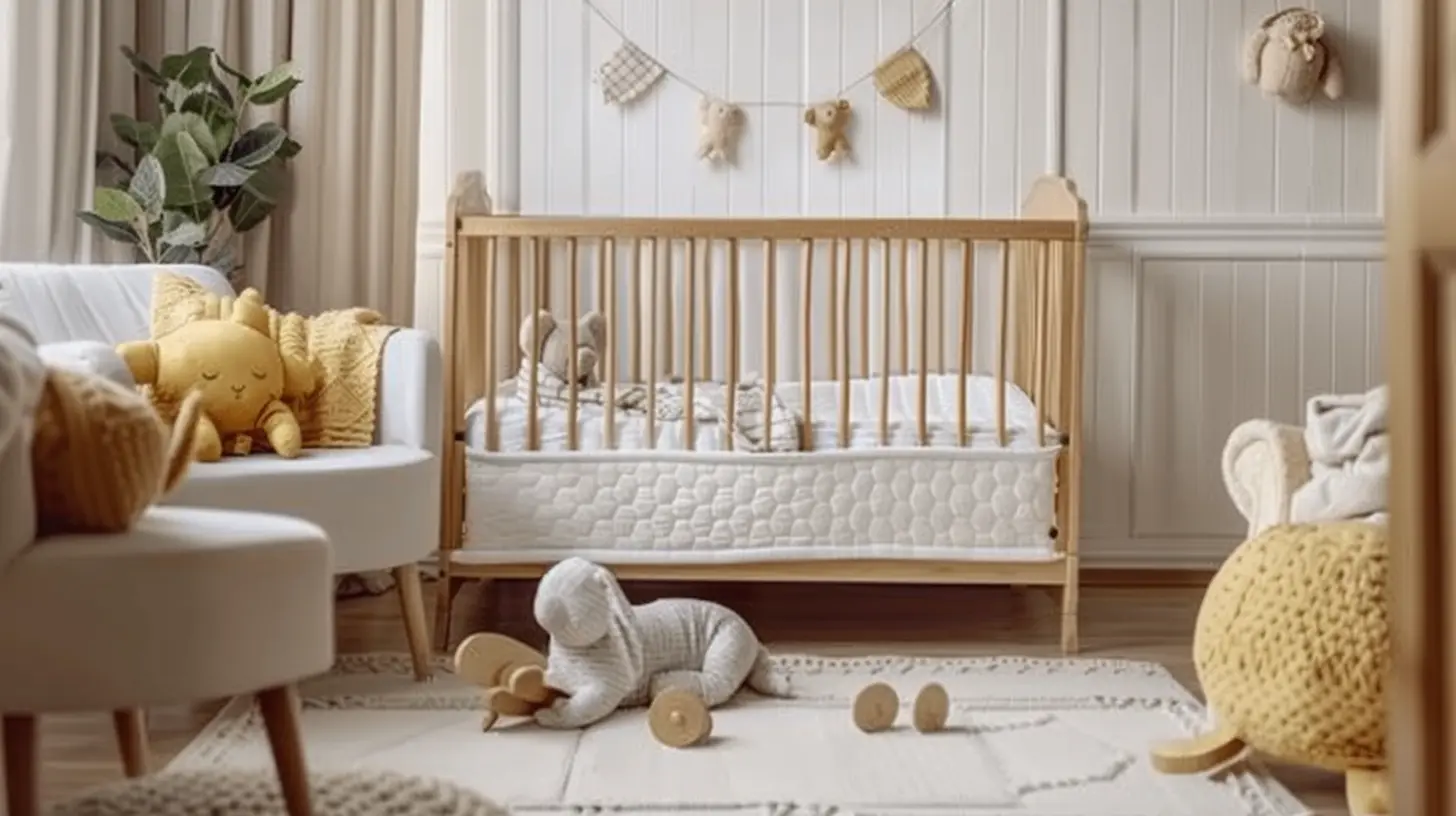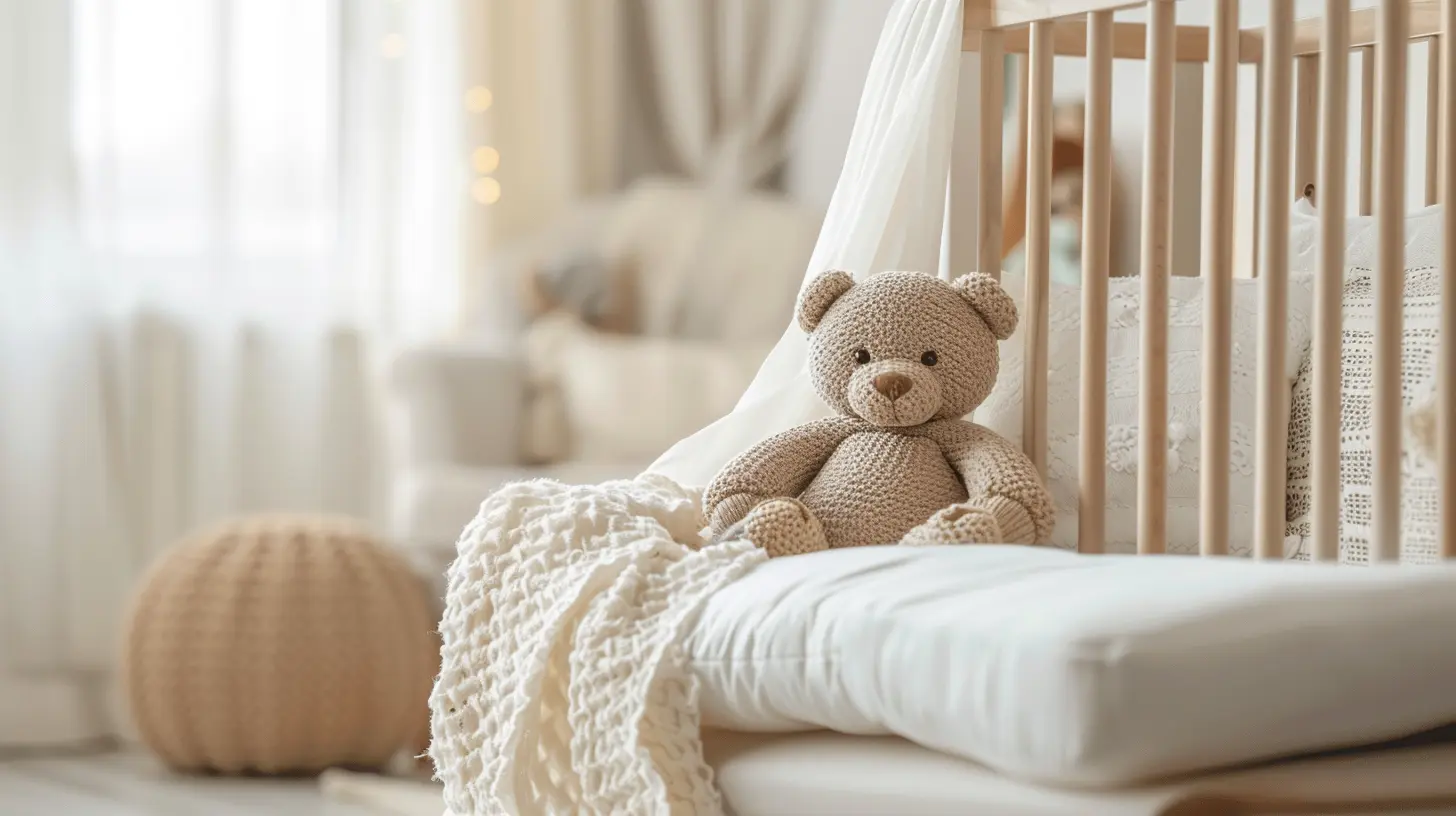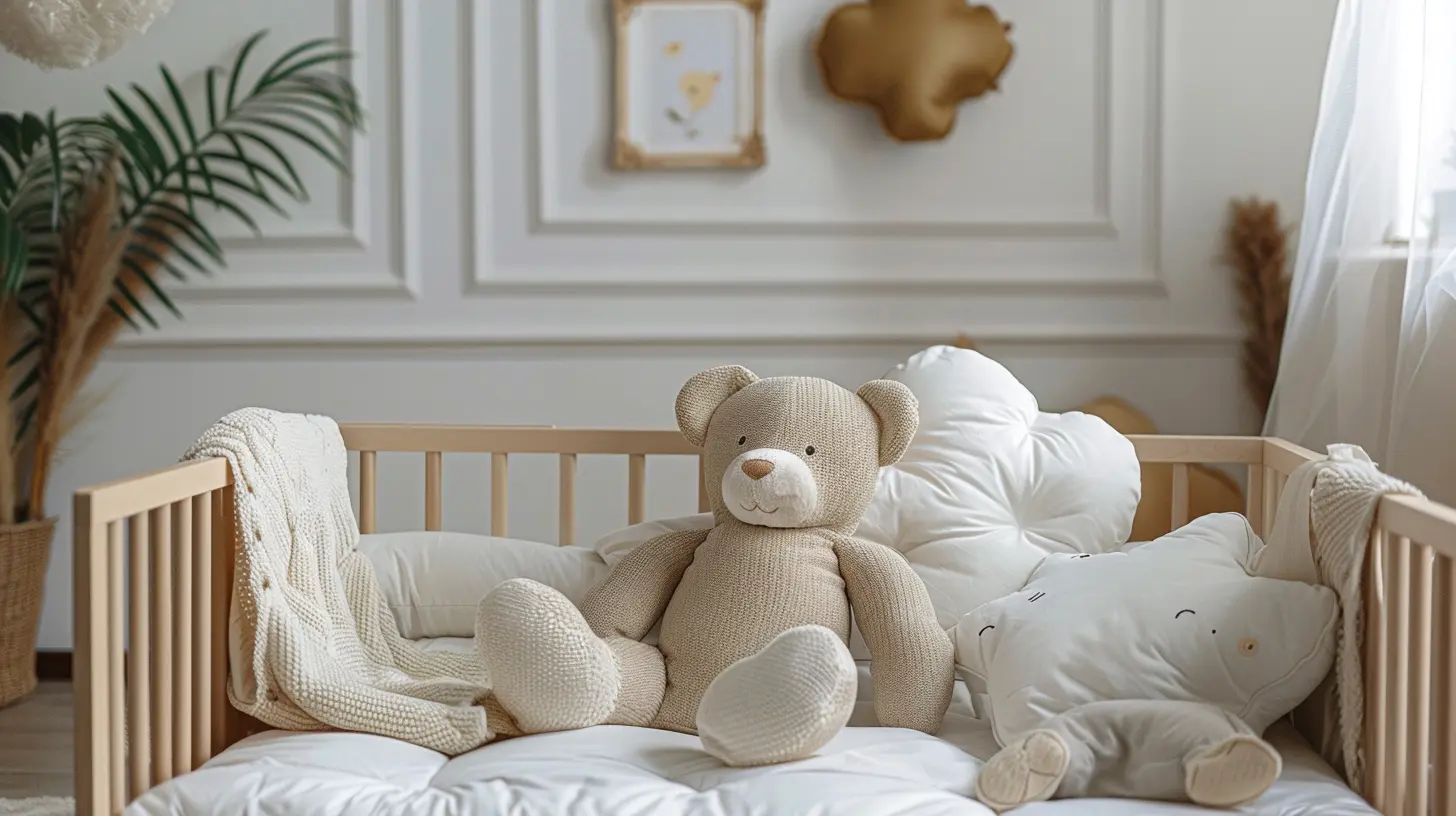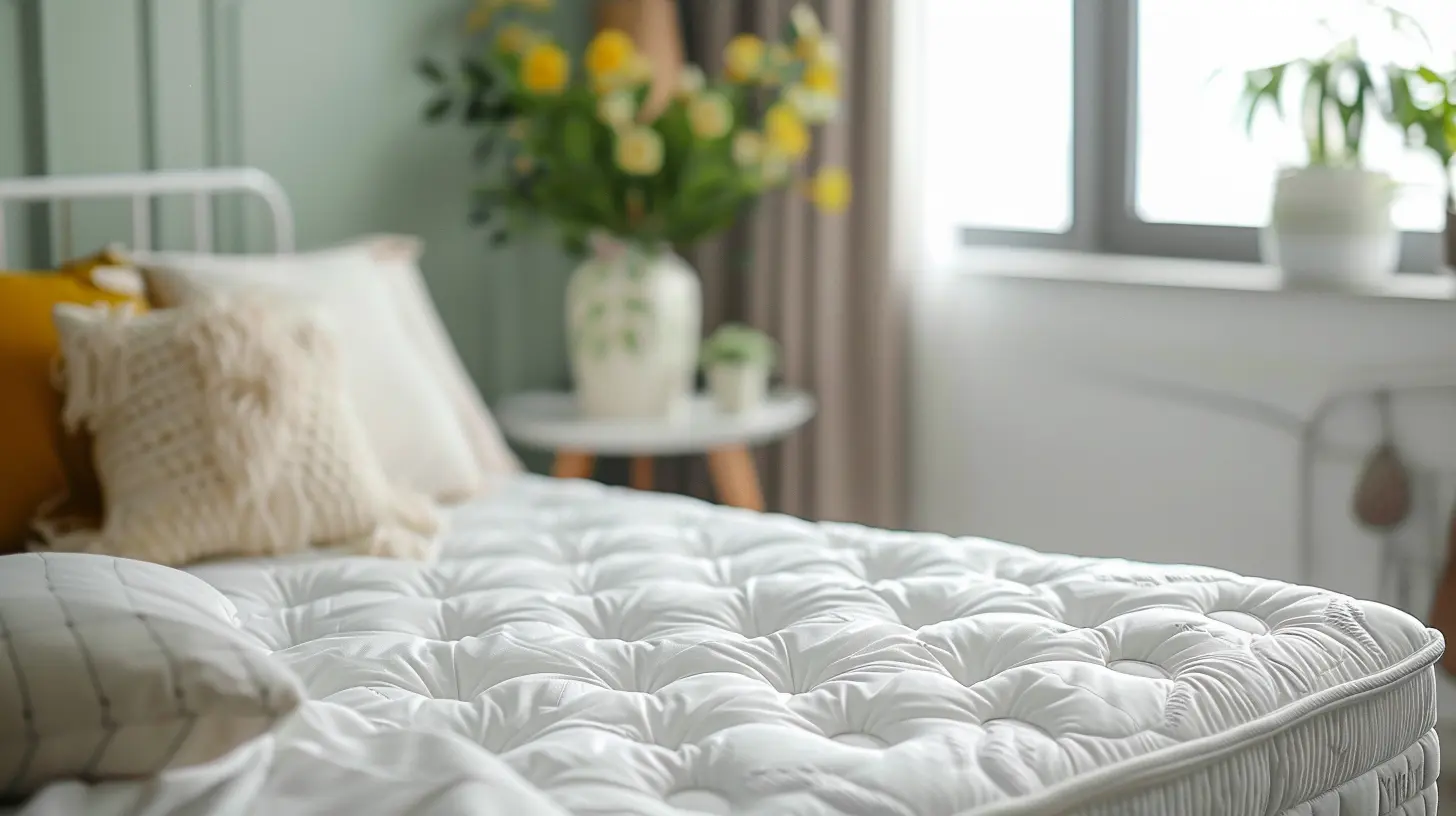How to Select the Best Crib Mattress for Baby's Safe Sleep
16 December 2024
As a parent, there's nothing more important than ensuring your baby has a safe, comfortable, and restful sleep, right? One of the most significant decisions you’ll make when setting up your baby’s nursery is choosing the right crib mattress. It may seem like a minor decision compared to picking out cute outfits or decorating the nursery, but believe me, the crib mattress you choose will play a huge role in your baby’s health, comfort, and safety. So, how do you select the best crib mattress for your little one's peaceful slumber? Don’t worry; I’ve got you covered!
In this guide, we’ll explore everything you need to know about choosing the best crib mattress for your baby’s safe sleep. From safety standards to material types, and even some extra tips to help you make an informed decision, let’s dive into the world of baby mattresses!
Why the Right Crib Mattress Matters
Before we jump into specific features, let’s first understand why picking the right crib mattress is critical. It’s not just about providing comfort; there’s more to it.1. Safety First: A firm and well-fitting mattress reduces the risk of Sudden Infant Death Syndrome (SIDS)—something every parent wants to avoid.
2. Support for Growing Bones: Your baby’s body is still developing, so they need a mattress that provides the appropriate support for their rapidly growing bones and joints.
3. Clean and Healthy Environment: Babies spend a lot of time sleeping (if you’re lucky!). A good mattress will ensure they’re in a clean, non-toxic environment free from allergens and harmful chemicals.
Seems pretty important, right? Now that we've established why crib mattresses are essential, let's break down how to pick the perfect one.
Key Considerations When Choosing a Crib Mattress
There are so many crib mattresses available, and each seems to boast a million different features. How do you narrow it down? Let's go through the most critical factors to consider:1. Firmness is Key
If there’s one rule you should never compromise on, it’s firmness. While an extra-plush mattress might seem like the coziest place for sleep, that’s not what’s best for your baby. In fact, babies need a firm mattress to help ensure safe sleep.Why? A firm surface helps reduce the risk of suffocation and SIDS, particularly in newborns who can’t fully control their movements yet. You should never sink into the mattress—think of it like this: if the mattress feels comfortable enough for you, it’s probably too soft for your little one!
Quick Tip:
Want to test it? Press down in the middle of the mattress and then lift your hand. It should snap right back up. If it leaves an impression, it’s too soft.2. Breathability and Airflow
Breathability might not be the first thing that pops into your mind, but it’s a feature that could make a big difference. A breathable mattress allows air to circulate, reducing the risk of suffocation and helping your baby to stay cool and comfortable all night long.Some crib mattresses have a breathable core or cover, which can also reduce overheating. You know how uncomfortable it is to sleep when you feel too hot? Well, babies share that feeling too!
3. Size and Fit: Avoiding Gaps
This might seem like a no-brainer, but you’d be surprised by how often parents overlook it. The crib mattress needs to fit snugly inside the crib. Any gaps larger than two fingers between the mattress and crib frame could pose a serious hazard. Your baby could slip into the gap, and that’s something no one wants to imagine.Thankfully, most modern cribs and mattresses are designed to standard sizes. However, always double-check. Measure your crib and make sure the mattress fits perfectly.
4. Safety Certifications
It’s comforting to know that certain crib mattresses undergo rigorous safety testing. Look for certifications like:- GreenGuard Gold: Indicates that the mattress emits fewer volatile organic compounds (VOCs) and is safer for indoor air quality.
- CertiPUR-US: Found mostly on foam mattresses, this certifies that the mattress doesn’t contain harmful chemicals like formaldehyde or heavy metals.
These certifications give you peace of mind that the mattress you’re buying meets strict safety standards.
5. Materials Matter
When it comes to crib mattresses, material selection can be overwhelming: foam, innerspring, organic… Where do you even begin? Let’s break it down:Innerspring Mattresses
An innerspring mattress is like the traditional mattresses most adults sleep on. These are made with metal coils inside and tend to be durable and firm. In general, more coils and a higher coil gauge means better quality, though these mattresses can sometimes be heavier to move around.Foam Mattresses
Foam mattresses are becoming increasingly popular for babies, thanks to their lightweight nature (you’ll appreciate this when trying to change the sheets at 3 am!). However, not all foam mattresses are created equal. Make sure you go with a high-density foam for firmness and long-term durability.Organic Mattresses
Looking for a chemical-free and eco-friendly option? Organic crib mattresses are made using natural materials like organic cotton, wool, or latex. They tend to be more breathable and hypoallergenic. However, they can come with a higher price tag, so be prepared for that splurge!6. Waterproof or Water-Resistant
Babies are messy; there’s no sugarcoating that. Between diaper leaks and spit-up incidents, things can get pretty soggy in the crib. That’s why you’ll want a mattress that either comes with a waterproof cover or allows you to add one.Look for a waterproof or water-resistant exterior that can easily be wiped clean. Some mattresses come with covers that are machine-washable, which is a parenting lifesaver!
7. Dual-Sided Mattresses
One thing parents often overlook is the longevity of a crib mattress. Some mattresses are dual-sided, meaning one side is firmer for infants, and the other side offers a bit more cushion for toddlers. This can be a great investment because you won’t have to buy another mattress when your baby becomes a toddler.
Common Mistakes to Avoid
Even after knowing what features to look for, it’s easy to make some common mistakes. Here are a few things to keep in mind:Mistake #1: Ignoring Mattress Weight
When you’re in the store or browsing online, you might overlook how heavy a mattress is. But once you’re struggling to change the sheets in the middle of the night, you'll wish you had picked something more manageable! Foam mattresses tend to be lighter than innerspring, so keep this in mind during your selection process.Mistake #2: Choosing a Mattress with Too Many Extras
Some crib mattresses come with bonus accessories like pillows or blankets, which can be tempting. But wait! You should avoid using pillows, blankets, or overly plush comforters in your baby's crib—these pose a suffocation risk.Mistake #3: Skimping on Quality for Price
Crib mattresses range greatly in price, and we all love a bargain. But when it comes to your baby’s safety, you don’t want to choose a mattress based on price alone. While budget-friendly mattresses can absolutely be safe, always ensure they meet safety standards and provide the necessary support.
Additional Tips to Ensure Safe Sleep
Now that you’re prepared to pick the perfect crib mattress, let’s talk about a few more ways to ensure your baby sleeps safely. After all, the crib mattress is just one piece of the puzzle.1. Place Baby on Their Back
This is the number one rule for reducing the risk of SIDS. Always place your baby on their back to sleep—never on their stomach or side.2. Avoid Soft Bedding
Apart from the mattress, the rest of the crib should be kept free from soft items like blankets, pillows, bumpers, or toys. Stick to a fitted sheet that securely covers the mattress.3. Maintain a Cool Room Temperature
Babies are sensitive to temperature extremes. Keeping the nursery at a comfortable and moderate temperature can further reduce the risk of SIDS.Final Thoughts: A Mattress That Grows with Your Baby
Choosing a crib mattress may not seem like the most glamorous part of preparing for a baby, but it’s certainly one of the most important. The right mattress ensures your baby gets a restful, safe sleep—which means you get peace of mind.Remember, a firm, safe, and well-fitting mattress with breathable materials and certifications is the gold standard. Don’t forget the dual-sided option if you want to get more mileage out of your purchase. With all these tips in place, you'll be well on your way to picking the best sleep surface for your little one!
Now, go ahead and make that decision with confidence—you (and your baby) deserve it!
all images in this post were generated using AI tools
Category:
Baby GearAuthor:

Noah Sawyer
Discussion
rate this article
12 comments
Amira Willis
Remember: If it’s good enough for Goldilocks, it’s good!
February 10, 2025 at 6:06 AM

Noah Sawyer
Absolutely! Just like Goldilocks, finding the right balance in firmness and comfort is key for safe sleep.
Chantal McVeigh
Choosing the right crib mattress is essential for your baby’s safety and comfort. Your careful consideration means the world to them.
January 29, 2025 at 3:31 AM

Noah Sawyer
Thank you! Prioritizing safety and comfort in crib mattress selection truly helps ensure a peaceful sleep for our little ones.
Rosalie McKeever
Great tips for safe sleeping!
January 22, 2025 at 6:05 AM

Noah Sawyer
Thank you! I'm glad you found the tips helpful for ensuring safe sleep for your baby!
Marissa McPhee
What a helpful guide! Choosing the right crib mattress is such an important decision for both baby’s comfort and safety. Your tips on materials, firmness, and fit really simplify the process for new parents. Thank you for sharing this valuable information to help us create the best sleep environment for our little ones!
January 17, 2025 at 3:59 AM

Noah Sawyer
Thank you for your kind feedback! I'm glad you found the guide helpful. Ensuring a safe and comfortable sleep environment for our little ones is so important!
Bernadette Flores
Choose quality for safety and peace of mind.
January 13, 2025 at 4:11 AM

Noah Sawyer
Absolutely! Prioritizing quality in a crib mattress ensures your baby's safety and promotes better sleep for both baby and parents.
Falkor Spencer
Choosing the perfect crib mattress is like finding the right pillow for a nap! Soft, safe, and snug—because we all know a happy baby means a happy parent. Sleep tight, little one! 💤✨
January 10, 2025 at 4:40 AM

Noah Sawyer
Absolutely! A safe and snug crib mattress is essential for quality sleep for both babies and parents. Thanks for highlighting its importance! 💤✨
Nix Soto
Choosing the right crib mattress is essential for your baby's safe sleep. Trust your instincts and prioritize comfort and safety for peaceful nights ahead!
January 4, 2025 at 3:59 PM

Noah Sawyer
Thank you for highlighting the importance of comfort and safety in selecting a crib mattress! Prioritizing these factors is key to ensuring peaceful sleep for both baby and parents.
Eliza Romero
Great tips! Prioritizing safety and comfort in crib mattress selection is essential for baby’s sleep.
December 30, 2024 at 4:06 AM

Noah Sawyer
Thank you! Safety and comfort are indeed crucial for ensuring your baby's restful sleep.
Paris McNair
Choosing the right crib mattress is crucial for your baby’s safety and comfort. Prioritize firm support to reduce suffocation risks, ensure it fits snugly in the crib, and opt for non-toxic materials. Additionally, consider waterproof covers for hygiene and ease of cleaning.
December 19, 2024 at 5:49 PM

Noah Sawyer
Absolutely! A firm, well-fitting mattress made from non-toxic materials and with a waterproof cover is essential for your baby's safe and comfortable sleep. Great tips!
Antonia Stevens
Choosing the right crib mattress is crucial for your baby's safety and comfort. Look for a firm, well-fitted mattress that meets safety standards. Materials should be non-toxic and hypoallergenic. Always check for certifications to ensure a safe sleeping environment for your little one.
December 18, 2024 at 5:20 AM

Noah Sawyer
Absolutely! A firm, well-fitted, and certified crib mattress made from non-toxic materials is essential for your baby's safety and comfort. Thank you for highlighting this important aspect!
Ardent McNeely
Choosing the right crib mattress shapes your child's sleep space, influencing their comfort, health, and safety.
December 17, 2024 at 3:46 AM

Noah Sawyer
Absolutely! Choosing the right crib mattress is essential for ensuring your child's comfort, health, and safety during sleep.
George Cain
Prioritize safety for peaceful, happy dreams!
December 16, 2024 at 3:51 PM

Noah Sawyer
Absolutely! Safety is paramount for ensuring your baby's peaceful sleep and happy dreams.
MORE POSTS

Raising Boys to Be Allies in Gender Equality

The Best Podcasts for Kids: Entertaining and Educational

Hosting a Family Movie Marathon to Strengthen Sibling Bonds

Raising Resilient Kids in a Fast-Paced World

Creating a Peaceful Morning Routine for Parents Who Work

Bringing Back Sunday Dinners: A Recipe for Family Togetherness

Dealing with Disappointment When Your Child Isn't Who You Expected

How to Use Technology to Encourage Creativity in Kids